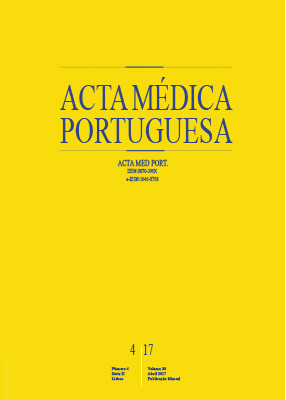Bisalbuminemia: A Rare Variant of Albumin
DOI:
https://doi.org/10.20344/amp.7187Keywords:
Albumins, Blood Protein DisordersAbstract
Introduction: Bisalbuminemia is a qualitative disorder of albumin and it is defined by the coexistence in the same individual of two types of serum albumin with different electrophoretic mobility. There are two forms: hereditary and permanent, or acquired and transient.
Case Report: Girl, 17-years-old, referenced to the hospital consult after incidental finding of bisalbuminemia detected in plasma protein electrophoresis performed within the investigation of diminished muscular tone in the lower limbs. Physical examination was normal. Secondary causes of bisalbuminemia were excluded. Later, it was confirmed the same disorder in plasma protein electrophoresis performed to her 14-years-old brother and mother.
Discussion: We describe a rare case of hereditary bisalbuminemia in a portuguese family. In general, this condition shows no pathological significance, however it is of interest to the clinicians the knowledge of this analytic change for better orientation of their patients.
Downloads
Downloads
Published
How to Cite
Issue
Section
License
All the articles published in the AMP are open access and comply with the requirements of funding agencies or academic institutions. The AMP is governed by the terms of the Creative Commons ‘Attribution – Non-Commercial Use - (CC-BY-NC)’ license, regarding the use by third parties.
It is the author’s responsibility to obtain approval for the reproduction of figures, tables, etc. from other publications.
Upon acceptance of an article for publication, the authors will be asked to complete the ICMJE “Copyright Liability and Copyright Sharing Statement “(http://www.actamedicaportuguesa.com/info/AMP-NormasPublicacao.pdf) and the “Declaration of Potential Conflicts of Interest” (http:// www.icmje.org/conflicts-of-interest). An e-mail will be sent to the corresponding author to acknowledge receipt of the manuscript.
After publication, the authors are authorised to make their articles available in repositories of their institutions of origin, as long as they always mention where they were published and according to the Creative Commons license.









